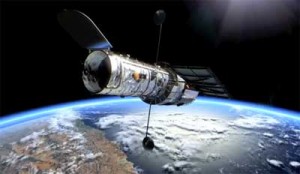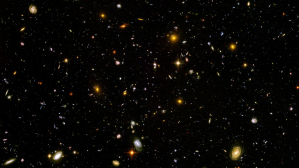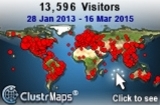I have, from time to time, been asked why I believe that there is life on other planets. I have a couple of answers for that. The first is that I believe in a God, and I further believe in a God that has more imagination then I do, and a God that has the will to act on His imagination. The fact that our Holy texts do not mention alien life doesn’t bother me at all. Our Holy texts do not mention Bacteriology or Virology either, and I believe in those sciences. Starting from the sciences of Biochemistry, Physics, and Astronomy, the leap of imagination to Xenoarchaeology is very short.
It has been estimated that there is something like 10^22 or 10^24 stars in the universe. Think about that for a moment:
10,000,000,000,000,000,000,000,000 stars.
The US National Debt is something in the neighbourhood of 16.8 trillion dollars. Or:
16,800,000,000,000 bucks.
Me, I can’t hardly fathom that amount of money. $7,000 is a year’s tuition for my eldest son to go to a good school. $15,000 is a car. $100,000 is a house with a bit of yard, depending on location, of course. $250,000 is ten years of fucking off at university. Millions I can grasp. Divide millions by four and you have me and friends fucking off at university for a decade. But anything past that, forget it.
But what do the number of stars and that national debt mean? They mean that stars divided by debt equals 59.52 times as many stars as there is debt. And personally, I very much doubt that we’ve got half a clue about how many stars there really are. What we think of, as the “edge of the universe,” might just simply be the artificial limitation of our best telescopes and most sensitive interments. I mean, isn’t it just possible that there is enough distance in the universe to make even an electron particle ware down from the friction of traveling in a 0 g atmosphere?
Sounds ridiculous. But not half as ridiculous as the idea that little bits of non-living matter get inside your body and trick your body into making more of the non-living matter so that it can kill you. But that’s virology in a hyperbolic nutshell.
Ask yourself for a moment what we might see if we took a telescope out to Abell 1835 IR1916, which is considered to be the “furthest known” galaxy from the Milky Way. What might we see from there? For my money, another 5,000,000,000,000,000,000,000,000 “new” stars isn’t hard to believe.
As you will see in the video “The Hubble Ultra Deep Field in 3D” embedded below, we may not even have to go as far as Abell 1835 IR1916 to “prove” that we do not really have a grasp on just how big our universe is. Observers pointed the Hubble Space Telescope at a bit of “nothing,” or dark blank sky over the course of several days. What they got back is now called the Ultra Deep Field. This is what they got this for their efforts:
According to Wiki:
The Hubble Ultra-Deep Field (HUDF) is an image of a small region of space in the constellation Fornax, composited from Hubble Space Telescope data accumulated over a period from September 24, 2003, through to January 16, 2004. Looking back approximately 13 billion years (between 400 and 800 million years after the Big Bang) it will be used to search for galaxies that existed at that time. The HUDF image was taken in a section of the sky with a low density of bright stars in the near-field, allowing much better viewing of dimmer, more distant objects. The image contains an estimated 10,000 galaxies. In August and September 2009, the Hubble’s Deep Field was expanded using the infrared channel of the recently attached Wide Field Camera 3 (WFC3). When combined with existing HUDF data, astronomers were able to identify a new list of potentially very distant galaxies.[1]
Located southwest of Orion in the southern-hemisphere constellation Fornax, the image is a bit over 3 arcminutes across.[2] This is just one-tenth of the diameter of the full Moon as viewed from Earth, smaller than a 1 mm by 1 mm square of paper held at 1 meter away, and equal to roughly one thirteen-millionth of the total area of the sky. The image is oriented so that the upper left corner points toward north (−46.4°) on the celestial sphere.
On September 25, 2012, NASA released a further refined version of the Ultra-Deep Field dubbed the eXtreme Deep Field (XDF). The XDF reveals galaxies that span back 13.2 billion years in time, revealing a galaxy theorized to be formed only 450 million years after the big bang event.
So where are all the Vulcans, Rodians, Goa’ulds, and Betelgeusians?
Well, there are a lot of speculative answers to that question. They are already here, haven’t you seriously looked at San Francisco lately? Or, nobody, absolutely nobody in the whole history of time and space has worked out how to travel between the stars. Or, they were here, but all died out because of smoking cigarettes and eating trans fats. Or the outside chance of, no seriously, we are the only ones, really. The Fermi paradox, as put forward by physicists Enrico Fermi and Michael H. Hart deal with these, and other more subtle questions. I’ll bore you about that tomorrow.
For now though, please enjoy the excellent video below about “empty space.” Which turns out isn’t nearly as empty as we thought.
“The Hubble Ultra Deep Field in 3D”
[youtube http://www.youtube.com/watch?v=oAVjF_7ensg?feature=player_detailpage&w=640&h=360]















